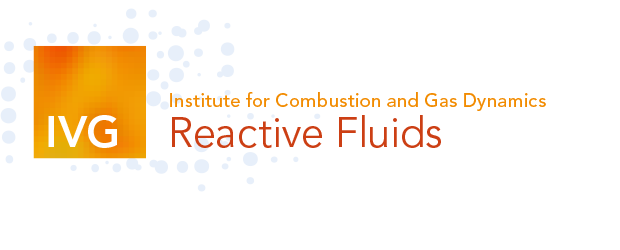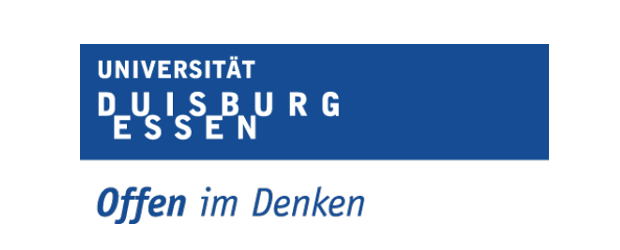Introduction
Welcome to LIISim3, a modular signal processing toolbox for time-resolved laser-induced incandescence measurements written in C++ with the Qt-Framework.
LIISim is a project of
Authors
Raphael Mansmann 


Tobias Terheiden

Philip Schmidt

Publications
The software is described in the following paper:
R. Mansmann, T. Terheiden, P. Schmidt, J. Menser, T. Dreier, T. Endres and C. Schulz: "LIISim: a modular signal processing toolbox for laser-induced incandescence measurements" Appl. Phys. B 124(4), 69 (2018). DOI 10.1007/s00340-018-6934-9
History
LIISim was so far known as console application (LIISim 1.5) and web interface (www.liisim.com), developed by Max Hofmann
between 2001 and 2007. The console application was written in C and the web interface was based on Perl.
Modeling settings and file names for experimental data could be defined in DAT files and after execution of the console
application, DAT output files containing the modeling results are created.
Later the console application was extended by a C++ based graphical user interface (GUI) by Tobias Terheiden and Martin Leschowski, which allowed the visualization of
the modeling results from the DAT files (LIISim Desktop 1.02 and LIISim Console 2.14). While the console application was distributed
among the community, the desktop version was not published and was only internally used.
In 2013 the development of LIISim 3 a new framework with object-oriented structure based on C++ was started by Raphael Mansmann
designed for the application on individual material systems (soot and non-soot) with a modular implementation of signal
processing steps and choice of heat-transfer models.
The old LIISim.com web interface (by Max Hofmann) can be found here.
Motivation
LIISim is designed to provide transparent and flexible tools, which allow individual setting of processing parameters, visualization of intermediate processing steps, and comparison of multiple experimental data sets.
Main features:
- Modular choice of user-defined material properties (soot, silicon, germanium,…)
- Comparison of experimental data with different pre-implemented heat-transfer models
- Various analysis tools help visualizing dependencies between experimental data sets (plots, parameter comparison, statistical information)
- Easy-to-use import (TXT/CSV) and export (TXT/CSV/MATLAB) functionalities
- Copy/paste of signals and analysis results into spreadsheet software (MATLAB, Excel, Origin,…)
- Software architecture allows processing and comparison of large data sets (> 4 GB)
Screenshots
Signal Processing
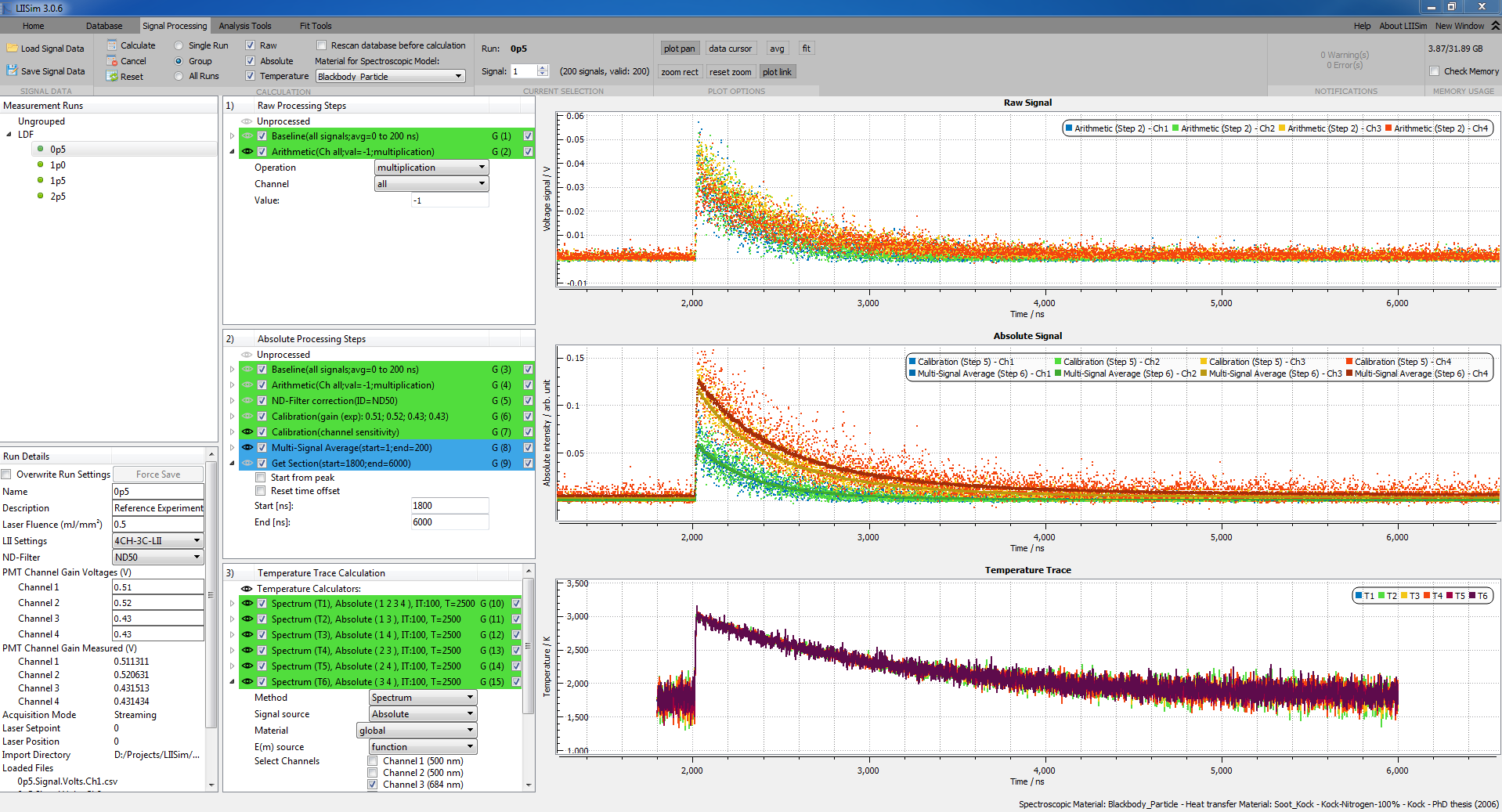
Analysis Tool: Temperature Fit
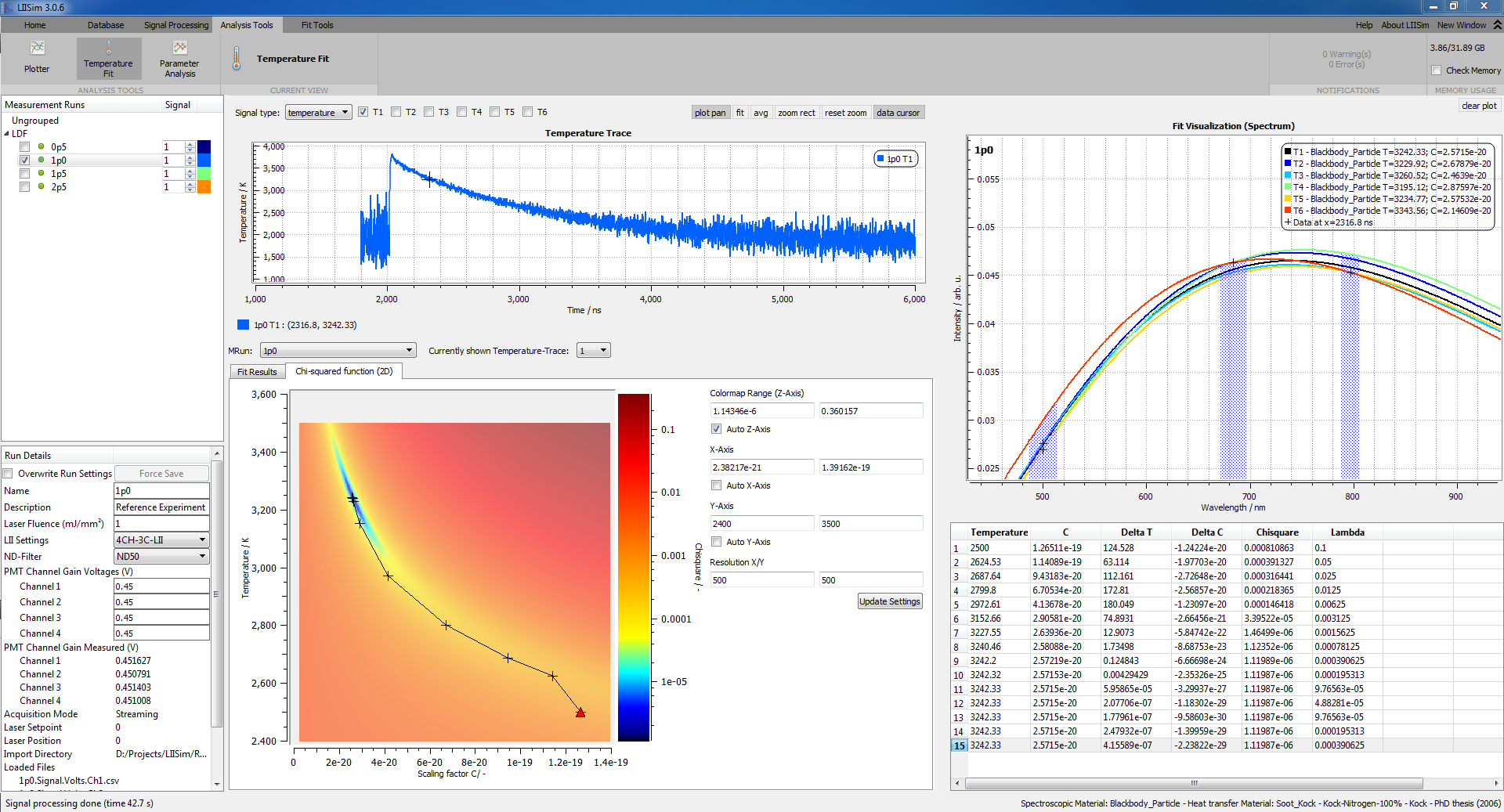
Analysis Tool: Parameter Analysis
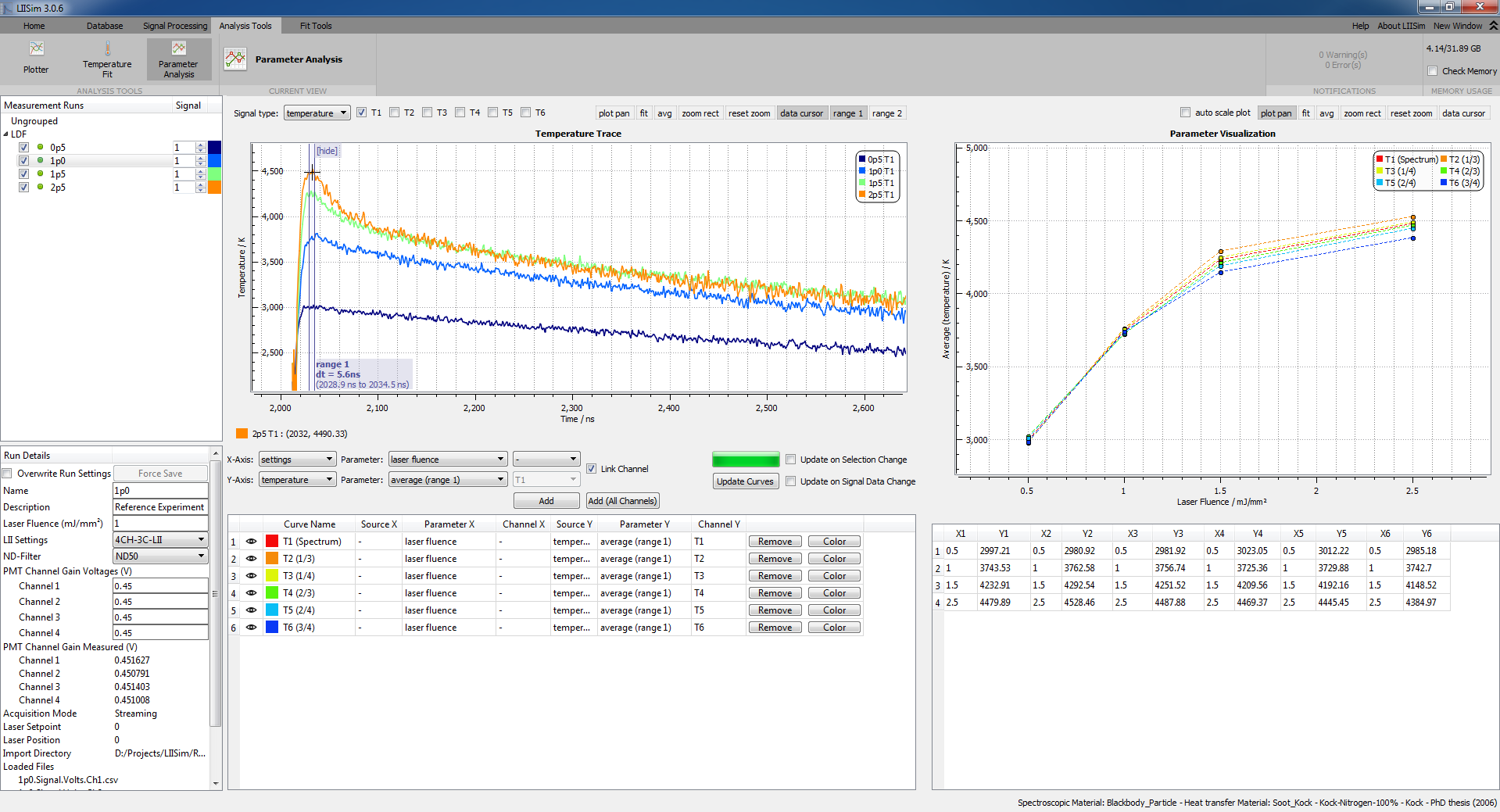
Fit Creator
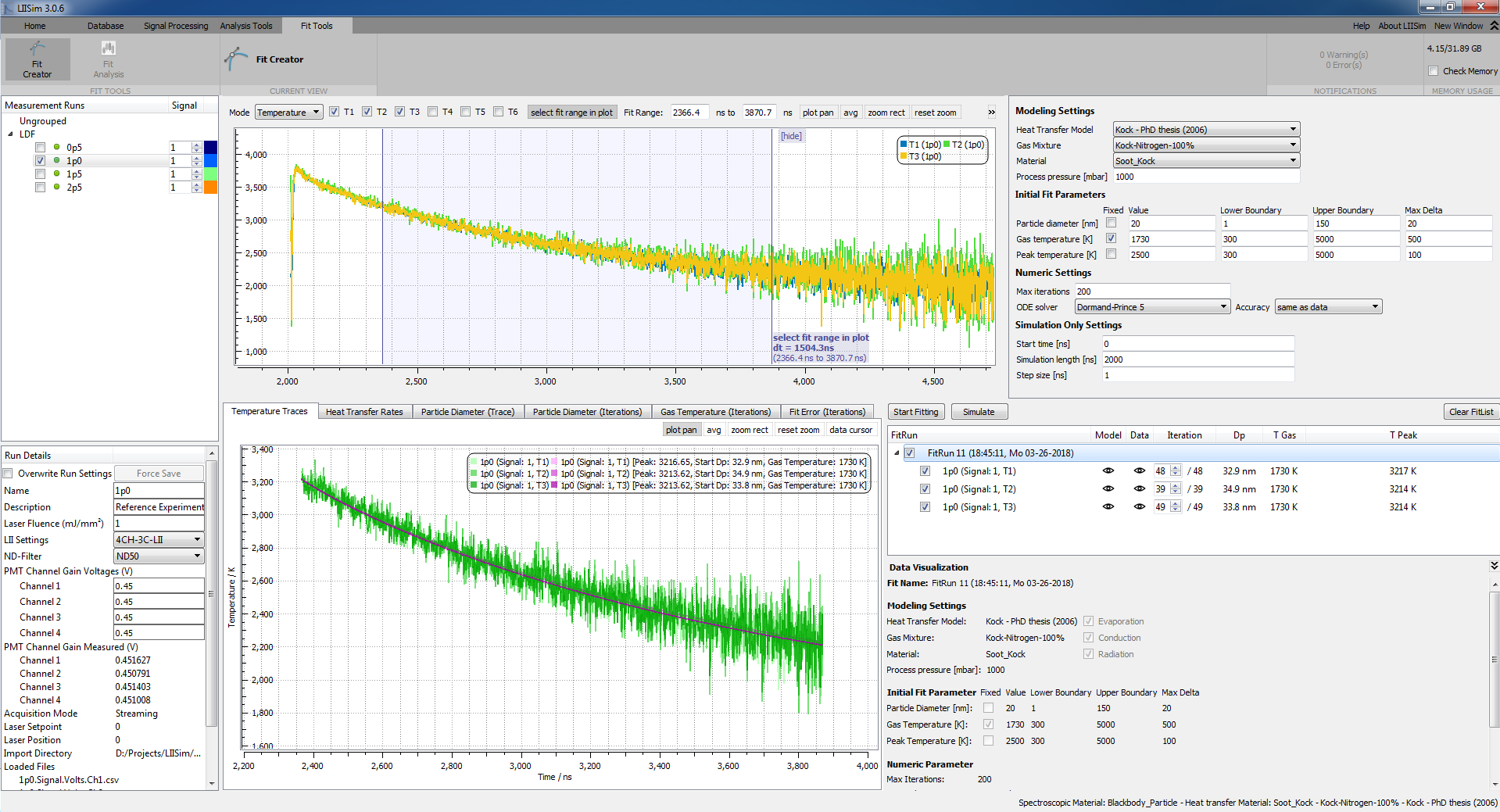
License
LIISim is free software: you can redistribute it and/or modify it under the terms of the GNU General Public License as published by the Free Software Foundation, either version 3 of the License, or (at your option) any later version.
LIISim is distributed in the hope that it will be useful, but WITHOUT ANY WARRANTY; without even the implied warranty of MERCHANTABILITY or FITNESS FOR A PARTICULAR PURPOSE. See the GNU General Public License for more details.
